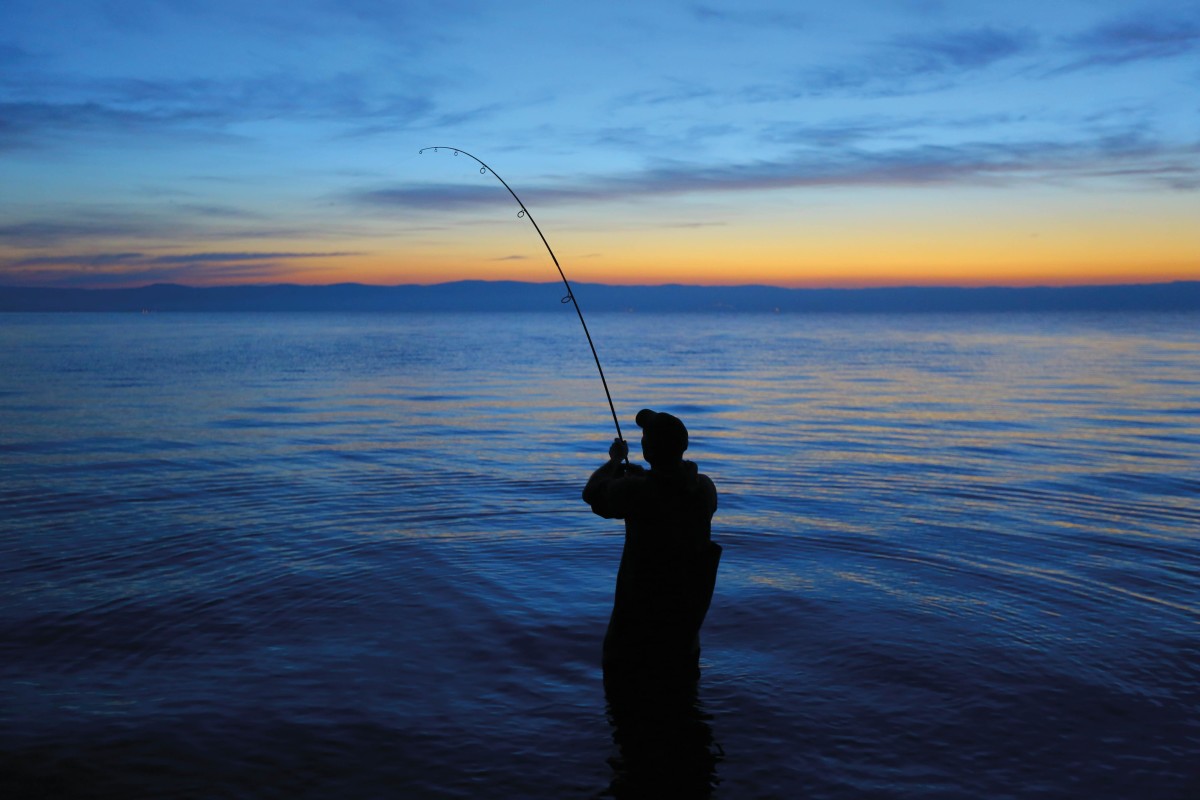
Lago Di Bolsena
Bill Cottam recalls how, after learning from his initial forays into carp fishing on the continent, a trip to the land of pizza, pasta and parma ham proved more than fruitful.
that if I were to compile a list of the most ridiculous angling decisions I have ever made, and put them in order of just how ludicrous each one was, then believing that the mighty Forêt d’Orient might just be a suitable venue for my first three visits to France would probably be right up there at the very top of the list.
I can’t remember the exact year I first went there, but I do recall that as a somewhat-wet-behind-the-ears, twenty-something lad from Yorkshire, with limited carp-fishing experience from visiting only a few local waters and just a handful slightly further a field, ‘the Orient’ represented what was, and remains to this day, arguably the most demanding and extreme form of carp angling imaginable. Out of my depth doesn’t even begin to describe it!
My first trip was in the company of three other, totally out-of-their-depth carp anglers in the shape of Ken Townley, Clive Gibbins and Brian Skoyles, and I remember as if it were yesterday, Clive’s opening gambit to Bri, who has always been a huge fan of surface fishing, as we climbed from the van and were greeted by several thousand acres’ worth of three-foot high white caps smashing into the dam wall in front of us…
“Shit! You’re gonna need a bloody big controller on here, mate!”
My three Orient trips were fabulously unsuccessful. In fact, if I am honest, I suspect that given what we had at our disposal, I wouldn’t have caught anything if I were still there!
Our reels didn’t have the capacity to hold anything like enough line to reach the areas we needed to fish; our biggest leads were not heavy enough to hold bottom the vast majority of the time; and the inflatable boat we had purchased from the local camping shop specifically for the job, was, in truth, a potential deathtrap, being more suited to use on the local duck pond than it was venturing out in the type of conditions commonplace on the Orient.
Thankfully, I think I can speak for all four of us when I say that we have all learned a lot since our abject failures on the Orient all those years ago. We are all reasonably capable now, and are adequately geared up to cope with just about anything big-water carp fishing can throw at us. Preparation, just as it is with so many other types of angling, is undoubtedly the key; do that bit right and you certainly put yourself in with a fighting chance of being at least reasonably successful.
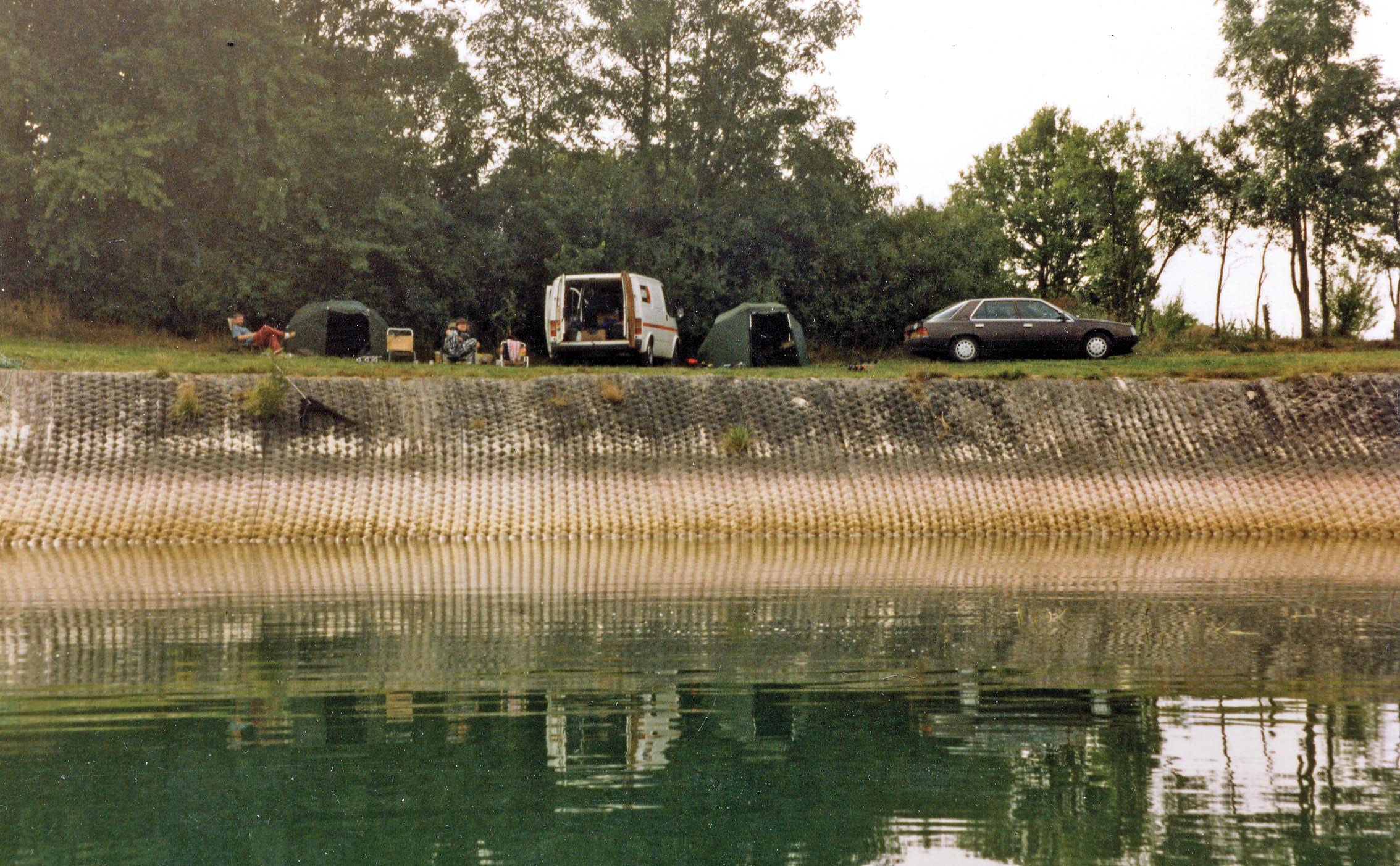
I had long threatened a return to one of Europe’s inland seas, and although I would dearly love another, more educated, crack at the Orient, realistically, I don’t honestly think I have the time to be able to compete on a venue of that nature. Despite what some people believe, getting away from work for more than a week at a time is unbelievably difficult for me, and everything I hear suggests that. Although it is obviously possible to just turn up and drop on a nest of ’em, so to speak, conquering sparsely stocked inland seas like the Orient invariably takes a great deal more time than I have at my disposal. If ever my situation changes, though, a return will undoubtedly be right at the very top of my things-to-do list. I say that, not only because I feel the water might just owe me one after my calamitous first three trips, but also because if I take everything into account, it probably represents the greatest carp water I have ever seen, and certainly one of the greatest challenges that exists in carp angling.
Obviously the surface area of venues like Forêt d’Orient varies substantially due to seasonal fluctuations in water levels, but statistically, the size of this unbelievable piece of blue stuff is generally accepted as being somewhere in the region of 6,200 acres (2,500 hectares). Whilst 6,000 acres is, of course, an absolutely enormous area of water by any stretch of the imagination, when compared to the other inland sea that has also long been on my radar, its size could be said to pale into relative insignificance. Lago di Bolsena in Italy is recorded at just over 28,200 acres! To put that into a scale that might be slightly easier to comprehend, at a fraction under forty-four square miles, it is almost five times the size of the Orient. Having said that, I suspect once you get beyond a couple of thousand acres, precisely how big a water actually is, must be largely irrelevant; they are all just colossally big.
I first heard about Lago di Bolsena from a couple of Italian mates of mine, Sandro Di Cesare and Antonio Di Rienzo. It would be no exaggeration to say that their stories of the sheer magnificence of the place, coupled with their tales of the epic battles they had experienced from some of the lake’s larger residents, excited me as much as anything I had heard about for many a year.
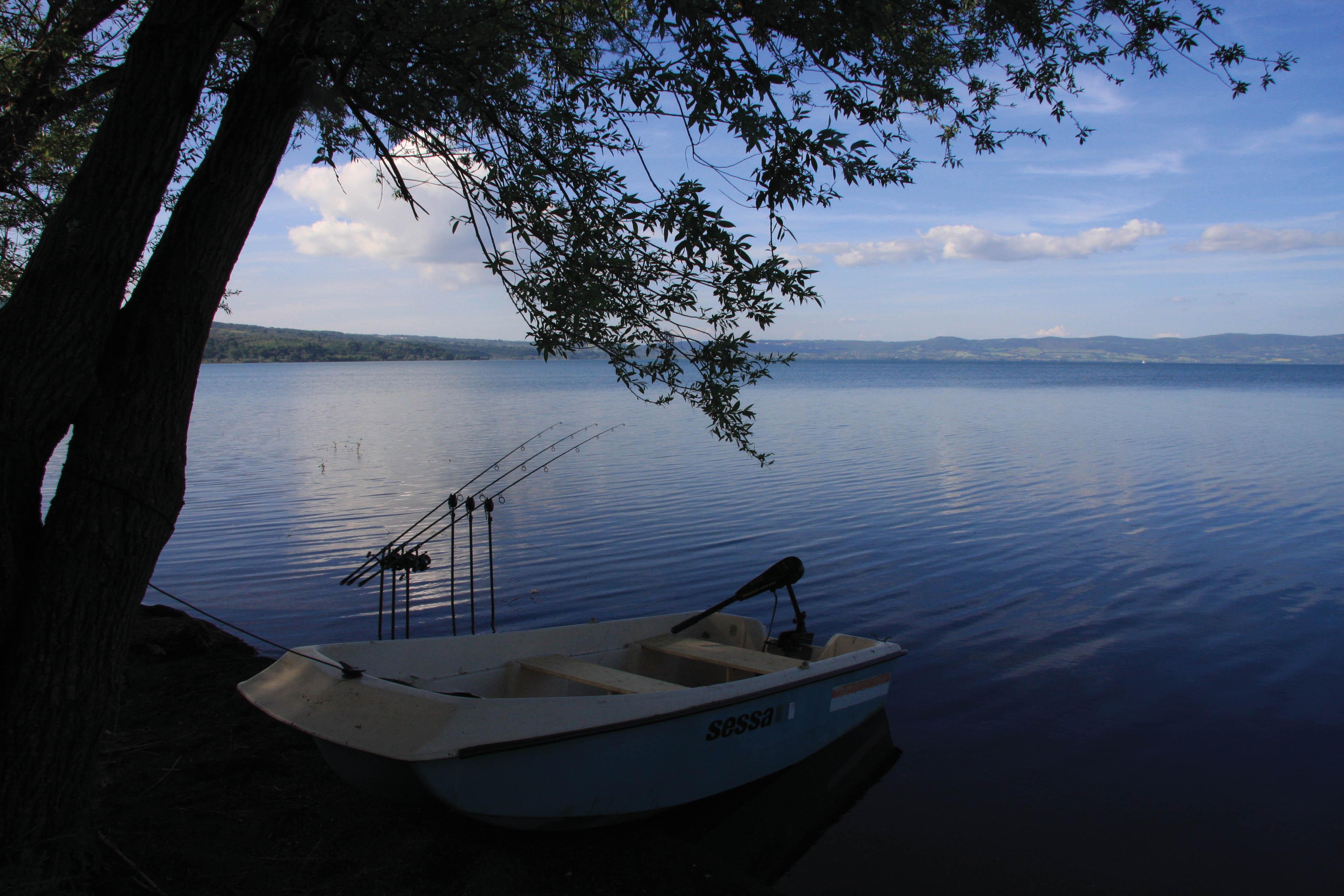
The only major problem was the lake’s location; the central western part of Italy represented one almighty road trip from my home in Yorkshire in the North of England. Many would have considered flying into Rome the more sensible option, of course, but having done exactly that before fishing elsewhere in Italy a decade or more earlier, I came to the conclusion that it is not really something that particularly finds favour with me. Sleeping on someone else’s bedchair, in a borrowed bivvy and without all my little bits and pieces of tackle, does little but give me the impression that I am looking after somebody else’s gear for the week.
The session that began with the flight into Rome all those years ago, was on a venue that went by the wonderful name of Lago di Casa Rosa—the Red House Lake—and despite the fact that Cliff Fox and I jointly held the lease on the sizeable venue for a number of years, it was a water I visited only once, and where I never so much as saw a carp. Although in my defence, my one and only trip there was in January, when the daytime temperatures rarely crept above about minus five degrees! My experience on Casa Rosa certainly fuelled my interest in Bolsena, though. Albeit the session was a real grueller from the moment Ken Townley and I arrived to the moment we left, in truth, it served to increase my desire to get my hands on a big Italian fish considerably.
For many years, Nutrabaits have exhibited at the monstrous Carp Italy exhibition held in Gonzaga every February or March. That invariably means that more often than not, I find myself travelling over in the company of one of the other guys from work, in the interests of doing our bit to promote the brand and support our agents in Italy, and 2013 was no exception. When our hosts, Outdoor International, knowing of my interest in Bolsena, suggested that Mark Backhouse (aka ‘Chuck’) and I should go over later in the year and combine the trip with making a DVD for them, it seemed like the perfect opportunity to realise a dream, and attempt to catch ourselves a Bolsena carp.
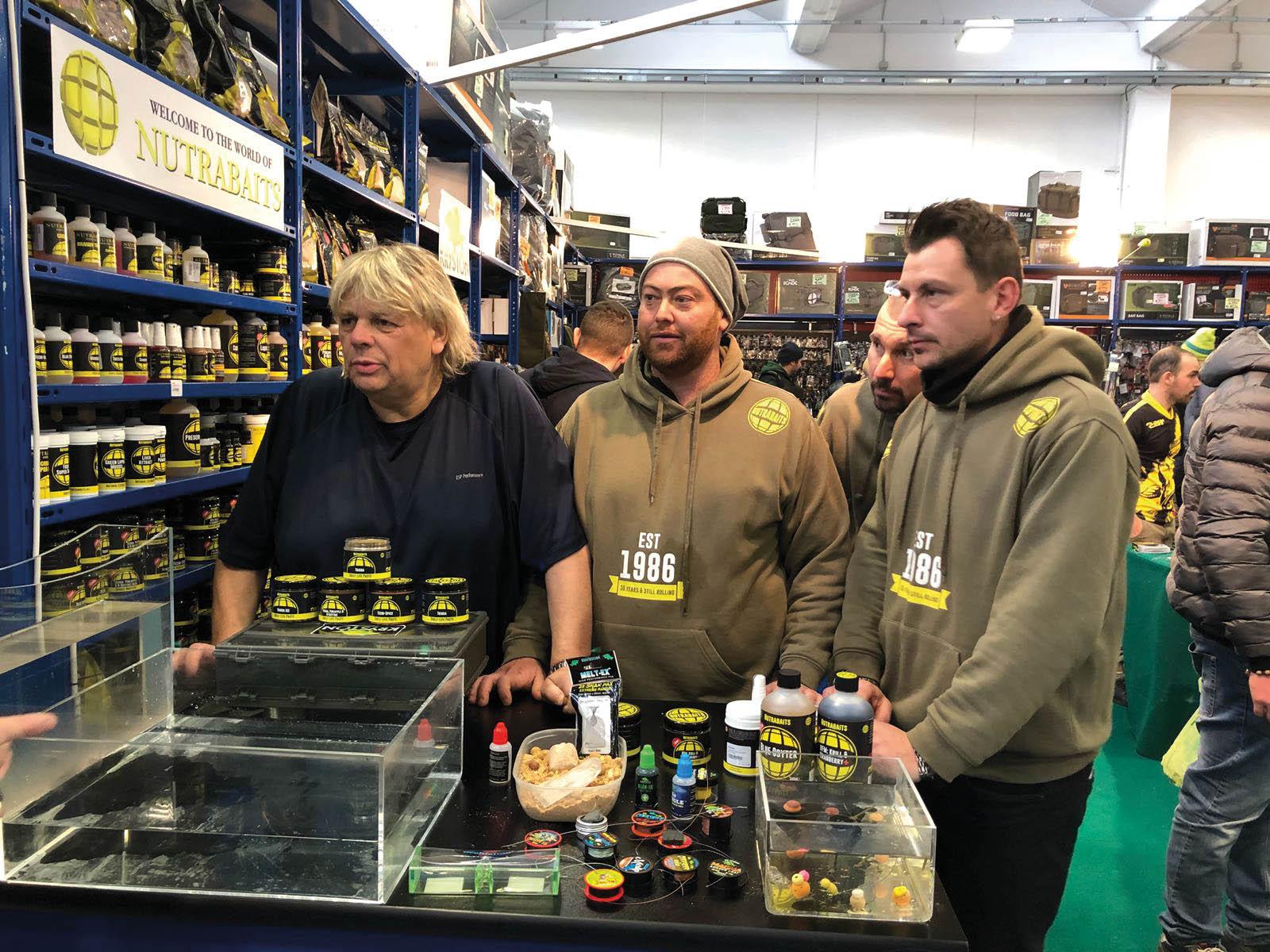
I had spent many hours travelling around Europe with Chuck over the previous few years, and had fished with him on a couple of occasions on Etang la Saussaie. Having done so, I knew that he was one of only a handful of people on the planet I could happily spend a lengthy period of time with, both in the van and on the bank, without wanting to kill them! After a lengthy discussion and much contemplation on my part—primarily because I am not really a fan of being filmed on the bank—we tentatively agreed to Outdoor’s proposition, and provisional plans were made for us to head out to Bolsena at the beginning of May that same year.
Generally speaking, I have never been a fan of picking the brains of people who have a knowledge of a particular water in advance of my visit, and always think finding out all that stuff for yourself is considerably more enjoyable, and ultimately much more rewarding. On this particular occasion, though, we undoubtedly needed a bit of help. We had no real interest in finding out what tactics, or which specific rigs and baits the guys were using on Bolsena, but in terms of what we were likely to encounter, and what types of distances we might be fishing, we definitely felt we needed some advice. When all is said and done, I was very conscious that Chuck and I needed to get everything right before we headed off to Italy, and didn’t make the same mistakes I had made on the Orient all those years earlier.
Antonio, who owns Carp & Co. tackle shop in Rieti, was without question the best man to talk to. He had fished Bolsena and had done pretty well, on and off, for over ten years, and I knew he would be happy to help us in any way he could. The only slight hiccup came in the form of language. Thankfully, though, Antonio had learned and mastered English, considerably better than Chuck and I had Italian, so whilst a couple of our emailed questions were lost in translation, eventually we were able to get a clearer picture of what we were likely to encounter on the banks of Bolsena. The main issues we wanted to get clear in our heads related to the distances we were likely to be fishing, and any specific rules we would need to adhere to, and I have to say that the information that came back initially put us both on the back foot a little…
Antonio suggested that we would need to gear up to fish at ranges of up to 350 metres, and that braided main line, backleads and 8oz leads on our rigs were also pretty much imperative. Bolsena is a crater lake of volcanic origin. Consequently, the lakebed is literally littered with huge rocks and boulders, and the most indestructible shockleaders we could possibly lay our hands on also apparently needed to be on our shopping list. I have to admit that we both felt a little out of our comfort zones at this stage. Neither Chuck nor I were particular fans of braided line—or fishing at 350 metres and backleading for that matter—but by the sound of things, we were going to have to get used to it, and fast!
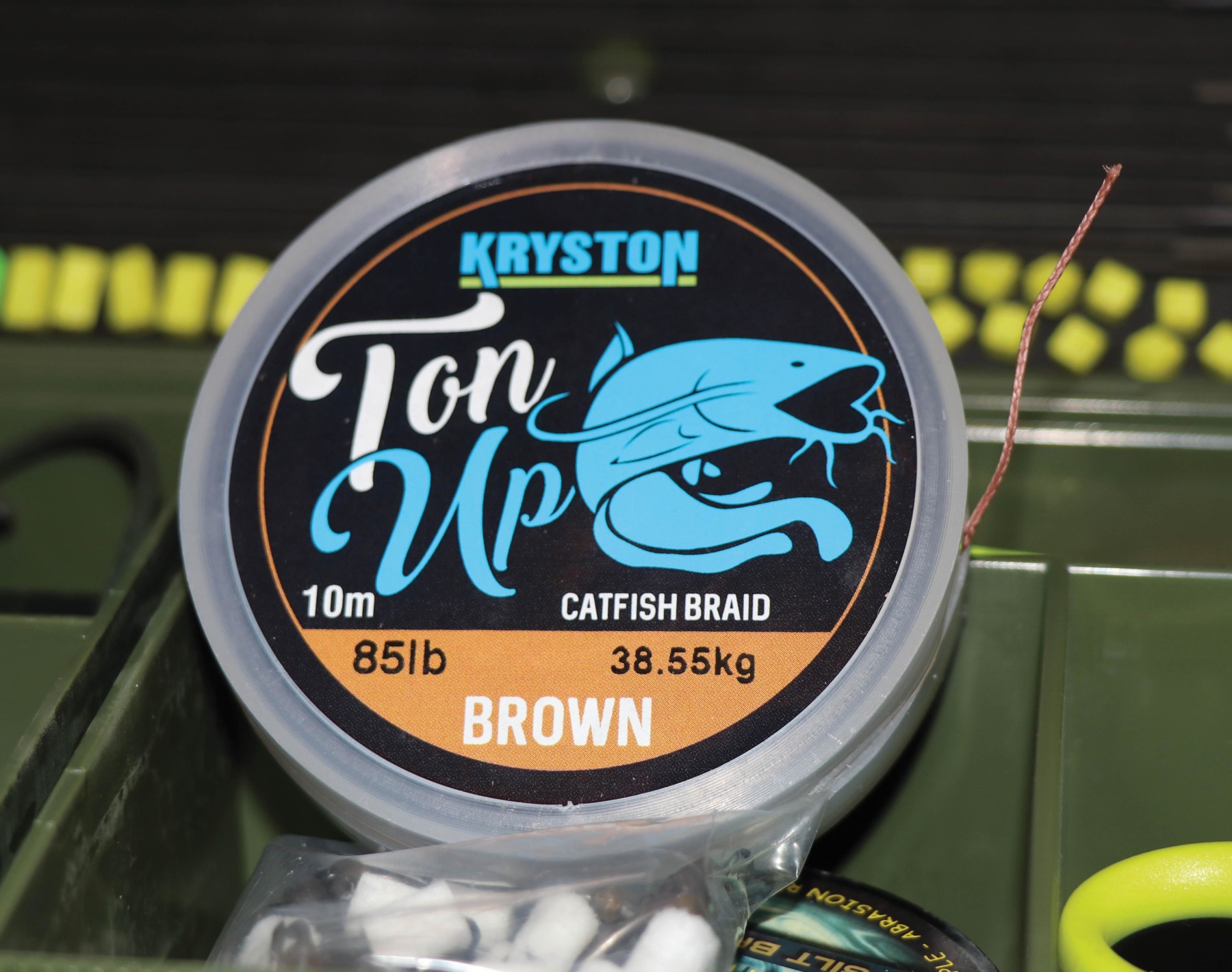
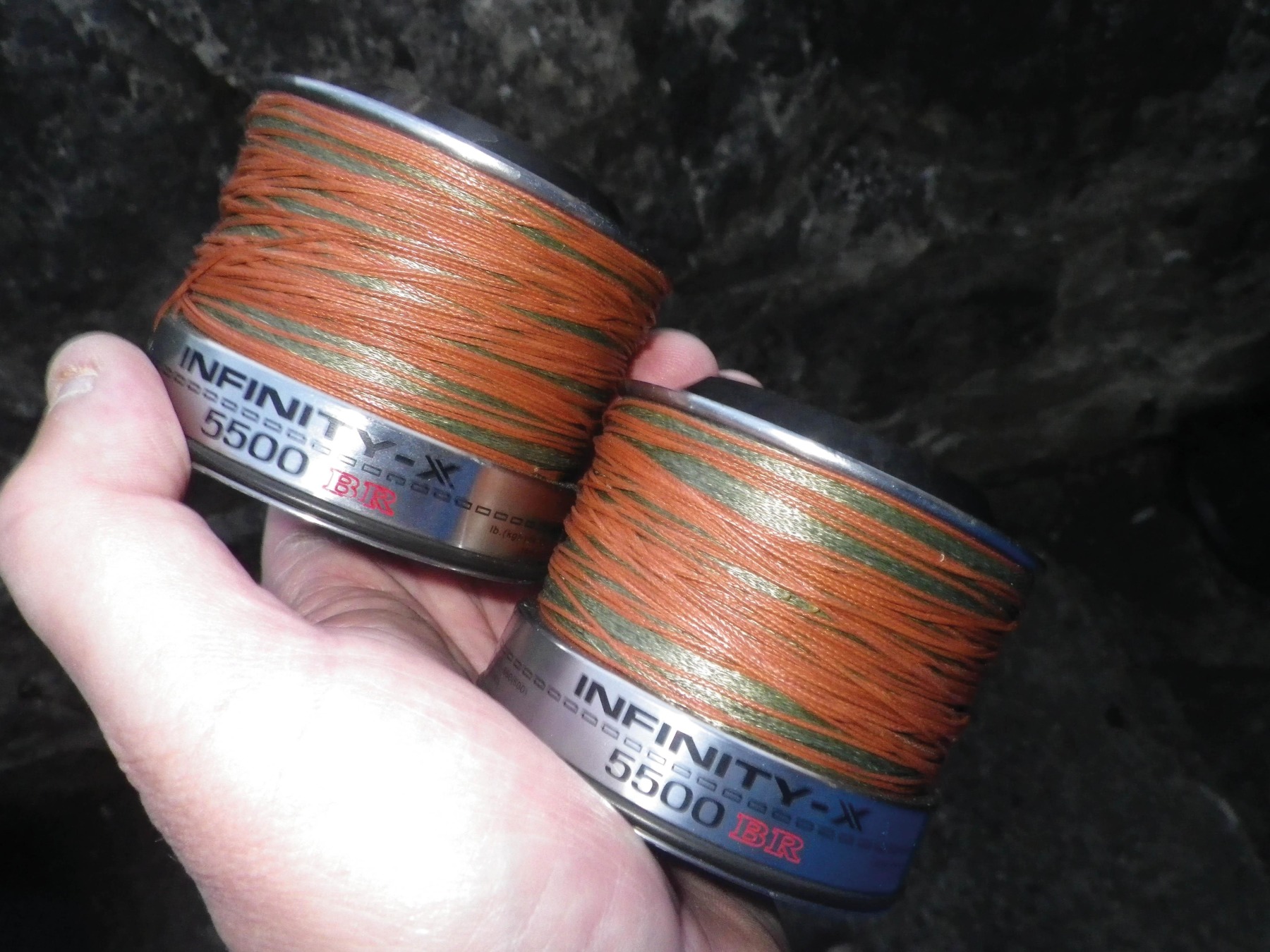
Initially I have to admit to querying the validity of backleads when fishing at such huge distances. We soon learned, however, that they were actually compulsory on Bolsena, because of the potential problems with the commercial bass and eel fishermen who work the water on a daily basis, and who are quite within their rights to boat straight over your lines, dragging their partially submerged nets behind them. From what I could gather, there is some kind of a long-standing trade-off going on, in that the commercial fishermen—who have, after all, been present on the lake for many more years than the carp anglers—are happy to leave the carp anglers to their own devices, as long as they are not hindered in any way by tight lines cutting through midwater.
Chuck and I felt that our lack of experience with braid necessitated speaking to someone who had a greater knowledge than we had of its relative pros and cons. With that in mind, I wasted no time in contacting my old mate, Tim Paisley. I knew Tim had been using braid to particularly good effect on Rainbow for several years, and that he could be relied upon for good, common-sense advice, and as expected, he was a huge help. Ultimately, though, his suggestion was that we should talk to Lee Jackson at The Tackle Box regarding the brand that would best suit our needs. Lee, without hesitation, suggested Dynon in either 22lb or 34lb, and our eventual choice was 22lb, based primarily on the fact that our Daiwa Infinity spools wouldn’t hold enough of the 34lb!
Our pre-trip shopping list was completed with a hefty bucket of 8oz Korda Grippas and a few 10-metre spools of 85lb Kryston Ton Up. I was particularly impressed with the shockleader material. A browse around my local tackle shop proved that there were, indeed, numerous alternatives to pick from, but Kryston’s seemingly bulletproof Ton Up seemed to suit our particular requirements better than most, albeit that it was a little tedious to thread through my usual anti-tangle tubing of choice, 1-metre lengths of Rig Marole’s Freefall.
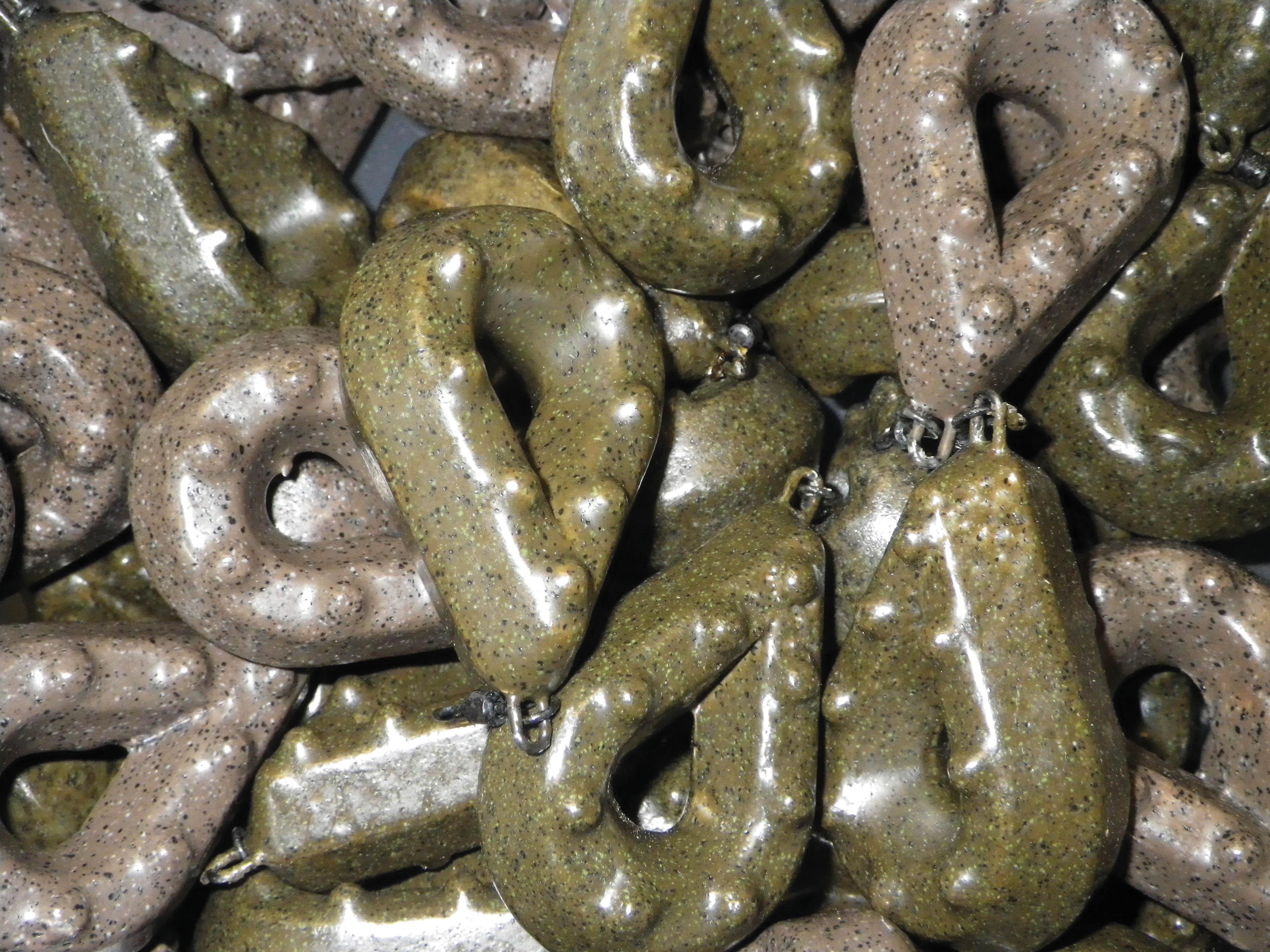
The Bolsena trip dominated our thoughts during the run-up to departure date, and by the time our 4 a.m. start from Rotherham came around, I think it’s fair to say that we were both very comfortable with our plan of attack. I knew from our numerous exhibition journeys to Italy over the years, that our route would take us through the Mont Blanc Tunnel, and that around sixteen hours behind the wheel should see us over the Alps. With this in mind, we had pre-booked an overnight stop in the sleepy little town of Aosta. Our thinking was that if we broke the journey’s back on the first day, we could allow ourselves a much more civilised start time on day two, and the remaining nine or ten hours’ driving should see us arrive at Capodimonte on the banks of Bolsena by around six in the evening. This would give us more than enough time to have a quick look around and get a feel for the place.
Amazingly, for a drive of such huge distance, everything went more or less like clockwork, and our leisurely eight-in-the-morning start from our hotel in Aosta did indeed afford us a few of hours of daylight, during which we had our first look at what was going to be our home for the week, before we enjoyed a well-deserved pizza and a few cold beers.
Our first sight of Lake Bolsena as we came down off the mountains was one of those things that I suspect will stay with us forever. The size and the beauty of what lay before us was quite simply breathtaking, and way beyond anything we could have ever prepared ourselves for. We stopped briefly on the way in at a particularly good vantage point just outside the village of Marta. For a couple of minutes, we simply gazed in disbelief at the enormity of where we were going to attempt to catch a carp from. I think it was Chuck who initially broke our stunned silence with, “I hope there are more than twenty fish in ’ere, marra!”
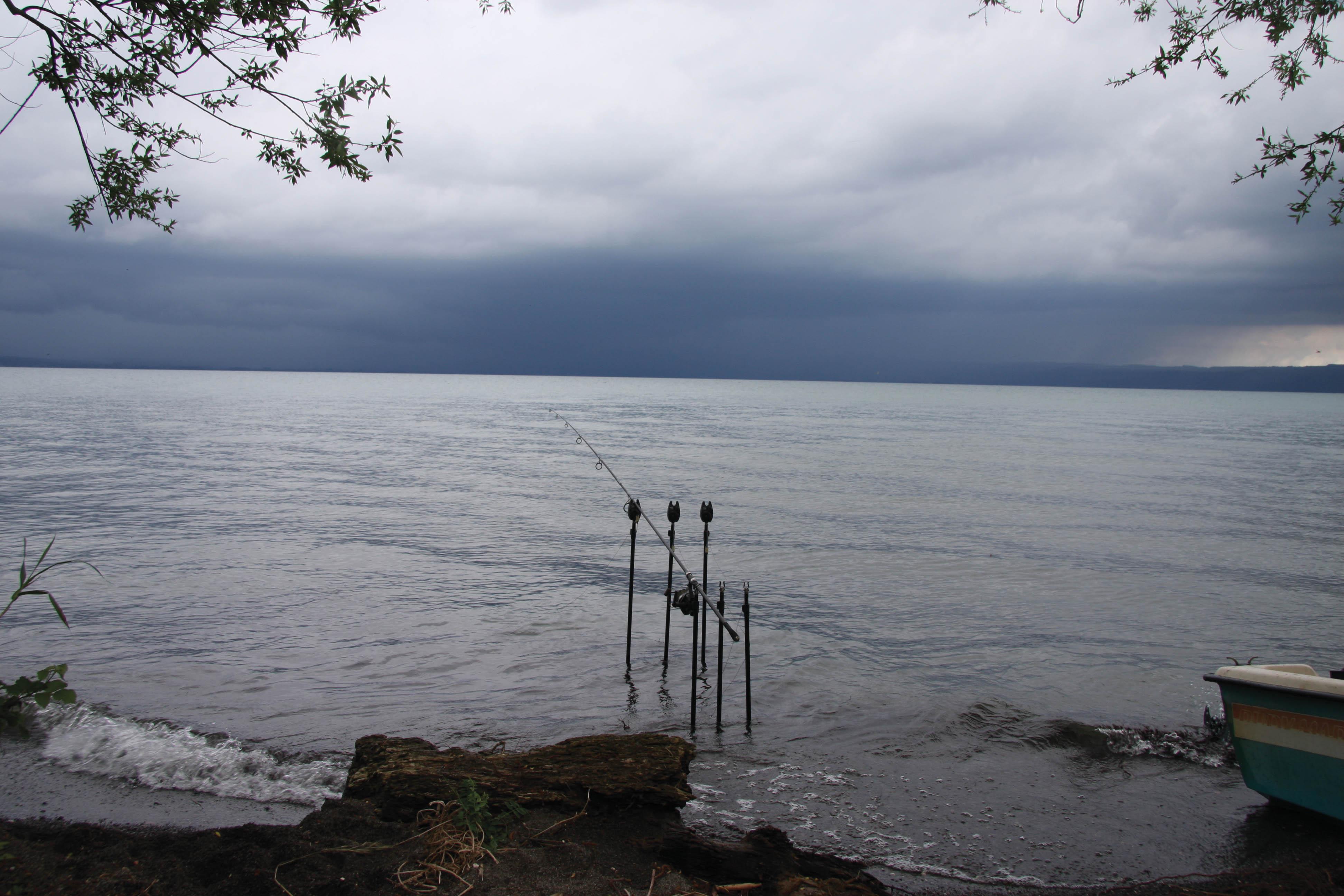
We had turned in around midnight in breathless conditions, with clear skies and Lake Bolsena looking like a mirror. My enthusiasm was dampened a little at about 6 a.m., however, when I awoke to a forceful wind rattling the shutters on the hotel window, and what sounded for all the world like pouring rain bouncing off the ground outside. I climbed out of bed, still more than a little weary from the journey. I peered out into the car park and my suspicions were immediately confirmed. It was absolutely hammering down, and from the look of the sky, there was still plenty more to come. By 8 a.m. we had made it out of bed, paddled across the road and were feasting on much-needed croissants, and drinking cappuccinos. I have to say, though, that the part of the lake that could be seen from the rear of the café looked like a totally different animal to the one we had admired the previous evening. It was grey and incredibly angry-looking, with white caps as far as the eye could see!
Amazingly—and despite the weather app on the phone suggesting otherwise—within an hour or so, the rain had eased to a drizzle, and although the brisk wind showed little sign of leaving us anytime soon, conditions appeared considerably better for finding a likely-looking area and setting up camp than they had before.
Although the area around where we had eaten the previous evening certainly appealed and undoubtedly looked worthy of serious consideration, it was rather too populated for our liking. There was also quite a busy-looking marina half a mile or so along the bank that housed dozens of potentially problematic yachts, not to mention an assortment of motor boats. These included a couple of particularly large craft that offered regular guided tours around the lake. As much as we were drawn to the spot, we were both very much of a mind that we would be better off trying to find somewhere slightly more isolated and away from civilisation.
The area three or four miles out of the village seemed to be much quieter, and much further away from the relative hustle and bustle of Capodimonte. It also appeared, on the face of it, to be the type of place where boat traffic would be much less of a persistent issue. So, based primarily on the fact that we could probably spend all day driving around such an enormous piece of water without finding anything that looked any better, we set about unloading the mountain of gear from the van and getting sorted.
Everything we had heard on the grapevine suggested that a depth of 15 to 18ft should be a good starting point during the early part of the year, and as I slowly made my way out with the echo sounder, I was very encouraged by how quickly I was reaching the sort of depths we were looking for. Eventually, I dropped a couple of H-blocks—one apiece—at a relatively manageable distance of about 160yds, in 18ft of water.
Working out how much bait we were likely to need for the trip had been very much a case of guesswork, and although we had based our plan of attack on between five and eight kilos of boilies each, per day, in truth, we had very little idea what sort of quantity we would ultimately need over the course of the week. We had brought two baits with us, something which, if I’m honest, neither of us do very often. These comprised air-dried 18mm Trigga freezer baits with elevated levels of Green Lipped Mussel Extract and a slightly higher-than-normal inclusion level of Blue Oyster flavour, and 20mm Tecni-Spice shelf-life readymades.
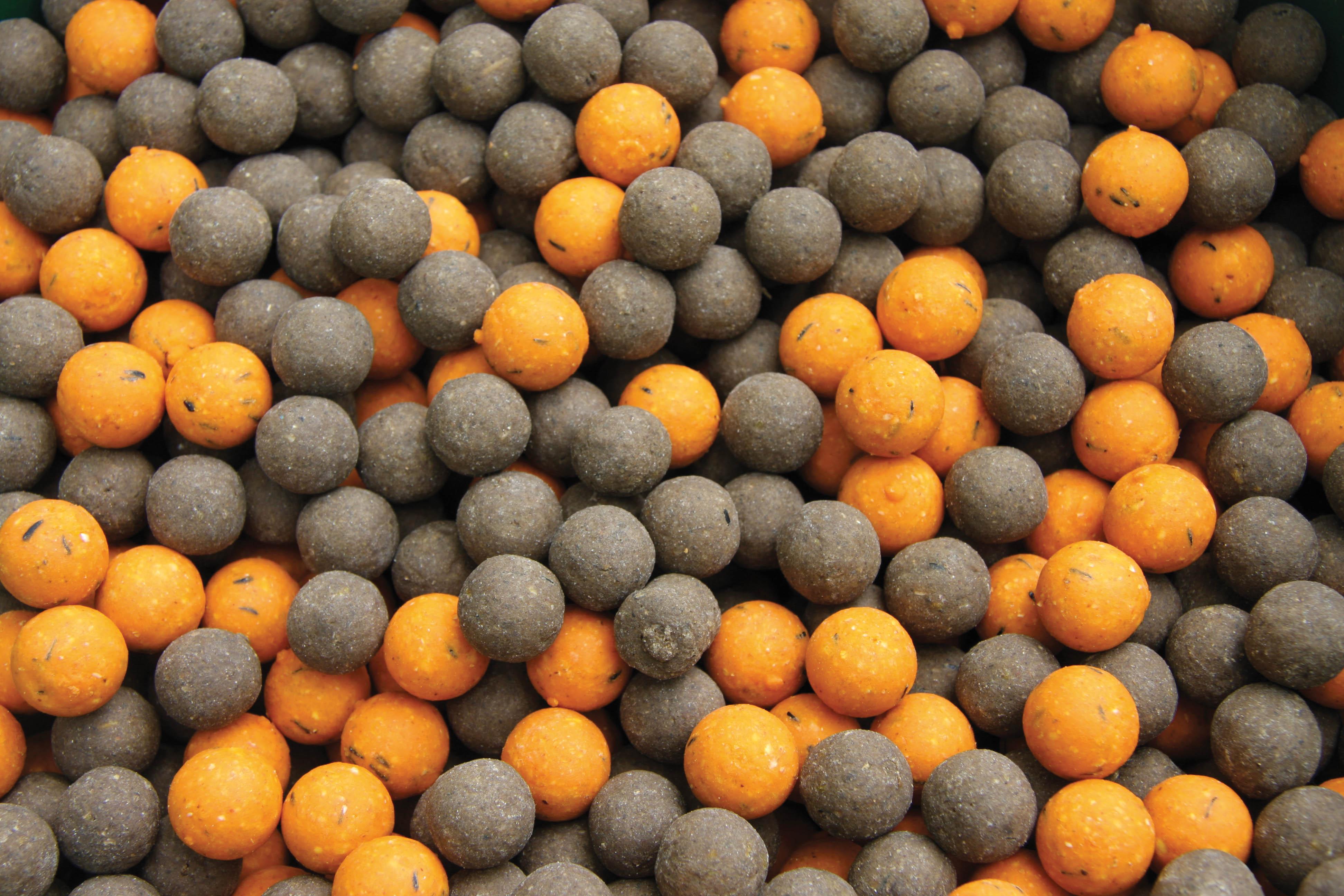
Our plan was to use the ever-reliable Trigga as the main bait, and add a little bit of extra attraction to the swim by using it in combination with the brighter-coloured, stronger-smelling shelf-life baits. The combined quantity and split of 75 per cent Trigga and 25 per cent Tecni-Spice certainly felt about right as I scattered my opening night’s ration in a large, arc-shaped area in front of the left-hand H-block. I have to admit too, that with three critically balanced Trigga-and-White Spice Snowman Rigs in position, and dusk falling ahead of our first night on Bolsena, I felt we were not a million miles away from getting it something like right.
Chuck had decided against fishing on the first night, preferring instead to get everything absolutely sorted and ready to go before spending a bit of extra time out in the boat in the morning, learning about exactly what he had in front of him. Our first evening, then, was spent staring at three rods instead of six, as we chatted, shared a quick bite to eat and marvelled at the night-time view of Bolsena village that, if one of our newfound Italian friends was to be believed, was nine miles away across the water. To add to the enjoyment of the first evening, although it was still a little damp underfoot, the rain had passed us by and the skies had cleared.
I guess it must have been getting on for midnight by the time we turned in, and I remember feeling rather weary as I crawled into the bivvy and collapsed onto the bed. The last couple of days had certainly gone better than we could ever have expected, but the consecutive early mornings and the lengthy drive had undoubtedly taken their toll.
At just after 3 a.m., I awoke to a familiar screaming noise coming from the direction of the bivvy table, and although it took me a little longer than usual to work out exactly what was going on, eventually I made my way out to the rods, where the left-hand spool was an absolute blur! For a second, I wasn’t sure what the best plan of action might be. Pouring a bucket of water over the spool was certainly an option, but I finally settled on the more usual approach and simply picked up the rod. Even taking into account the fact that I was using braided line straight through, the power of the fish was incredible. In truth, the only thing that changed when I gave the reel handle half a turn was that line was stripped off the clutch instead of via the baitrunner mechanism. As I sensed the fish eventually beginning to slow a little, I tightened the clutch a couple of clicks and attempted to regain some of the line that had disappeared from the spool during the previous minute or so.
Thankfully, it seemed like most of my adversary’s energy had been used in its initial powerful run by the time a rather bleary-eyed Chuck appeared by my side, and as the fish circled around in front of me, we both took a few extra strides out into the lake. Soon after, and with Chuck having done the honours, our first Bolsena common was safely in the bottom of the net. She certainly felt reasonably heavy by the time we got around to transferring her into the weigh sling, but we had no idea what type of weight we would ultimately be able to record, her immense length making it very difficult to even hazard a guess. The needle on the Rubens eventually ground to halt four ounces short of forty pounds. We had had baits in the water for only eight hours or so, and already it was celebration-coffee time!
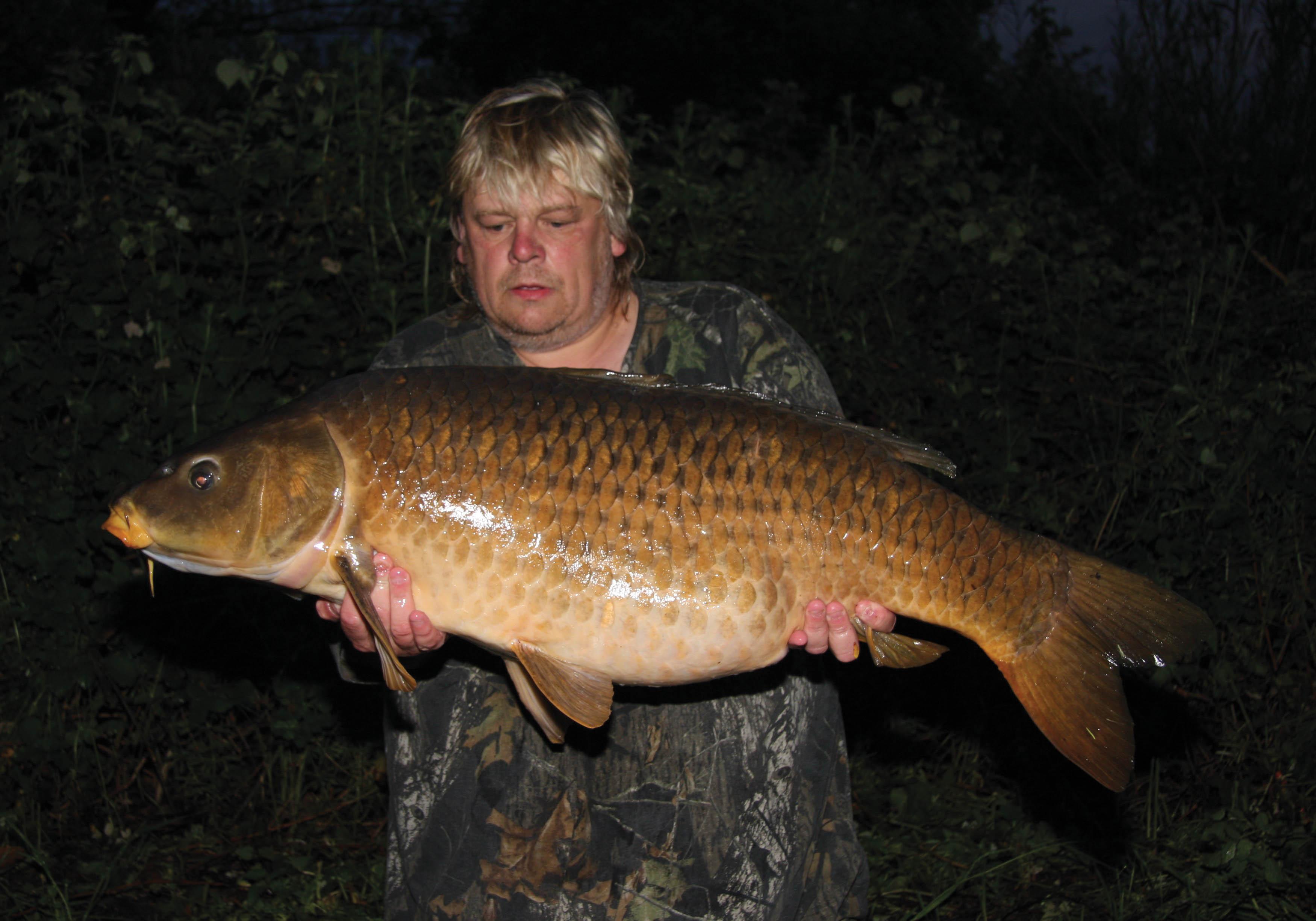
Within half an hour, I was hanging on to the middle rod and doing battle once again, as another Bolsena fish ripped yard upon yard of line from the spool. It was exactly the same routine as last time, in that after the ferocious take and initial, unstoppable run, I was able to make some sense of proceedings relatively quickly, gradually steering her towards Chuck, who was once again waiting with the net. I think we both had the impression during the scrap that fish number two was probably not quite as big as the first, and at 28lb on the nose, our suspicions were later confirmed.
I was down to just the one rod by the time I made it back into the bivvy at 4 a.m. Having convinced myself that nothing else would be coming my way anytime soon, I drifted off to sleep in a much more relaxed manner than I would normally have done, my plan being to catch up with a few hours of much-needed shut-eye before repositioning the two rods that had produced fish, at a more sensible time in the morning. I entered the first two fish in the diary, swung my legs round onto the bed. I then nearly jumped out of my skin… rod number three was away!
The take on this occasion was like quite a few that were destined to come our way through the week. Whatever was on the end was going so fast, that for a few seconds I just stood and looked at the rod. Eventually, I plucked up courage to remove the butt from the locking backrest which had undoubtedly stopped the rod from taking off like an Exocet missile—and that I had bought prior to our trip for that very reason—and watched in disbelief as braid continued to melt from the spool.
I had no way of judging just how far the fish had travelled by this time, but there was no doubt in my mind that she was way beyond the potentially hazardous H-block. To my eternal relief, though, she chose to go left, away from the marker and away from danger, and after a few hairy moments in the weed along the margin, I was able to coax her into the open water in front of us.
Chuck did the business with the net once again, and without any dramas. I flicked the head torch on and peered into the bottom of the net. The fish was certainly at least comparable in length to the thirty-nine-plus I had caught a couple of hours earlier, but unless my eyes deceived me, she also appeared to be a little thicker across the shoulders.
Chuck removed the hook, which was lodged perfectly in the corner of her mouth, before we transferred her to the sling and onto the scales. We were both in little doubt that the dial was going to signal the fact that we had caught our first Bolsena forty, and our suspicions were confirmed when the needle went straight past the magical mark to settle eventually at 43lb 4oz.
By nine in the morning, we had revitalised ourselves with a couple of bucketfuls of coffee and a bit of breakfast. I had boated my rods out once again, and had topped up the area with another bucketload of mixed boilies. Chuck, who up until shortly before hadn’t dropped a bait in anger, was also now fishing, having already spent half an hour or so out in the boat with the echo sounder at first light.
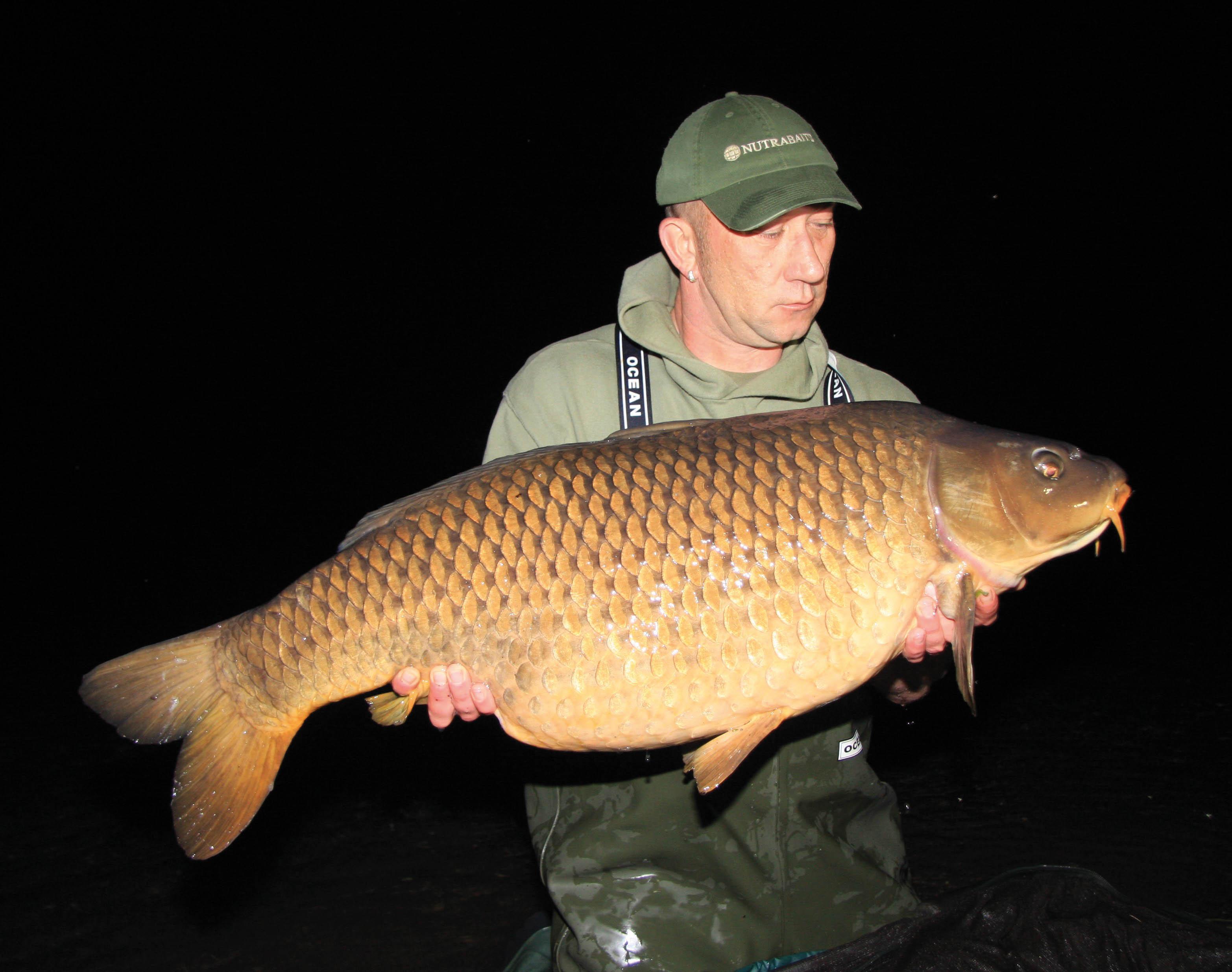
Life, as it has a habit of doing when you have caught a couple of good fish early on in a session, felt good, and for the first time since we had arrived in Italy, we could actually just sit back for an hour or two and soak up the beauty of the huge lump of water that lay before us.
We had a sizeable island over to our right, and for an hour or so we debated just how far away it was. Our initial estimations were that it was probably a mile or so, but when we spotted one of the sightseeing boats—one that we had also seen in the harbour at Capodimonte the previous evening—coming across the front of it and appearing to be no bigger than something your kids might take in the bath, we came to the inevitable conclusion that we had seriously underestimated the scale of things. In reality, the island was probably more like three miles away! Judging distances proved to be an ongoing problem for us at Bolsena, if I am honest. The lake is so huge, that getting an accurate perspective of things was nigh on impossible.
Early afternoon signalled the arrival of the expected Outdoor International party in the shape of John Gemani and Andrea Minguzzi—both of whom I had known for some years—and a guy I had not met before, and who had got himself the unenviable job of turning our antics into a DVD, Salvatore Perrone. The Outdoor boys had waxed lyrical about Salvo’s photographic and filming skills for some time, so it was with considerable interest that I watched him at work over the next couple of days. I have always been fascinated by people who are exceptionally good at what they do, and it very quickly became clear that Salvo undoubtedly fell into that category. I spent a considerable amount of time attempting to pick his brains on the subject, of course, in an attempt to improve my own photographic skills, but as is so often the case with immensely talented people, I suspect he had absolutely no idea just how much he knew compared to enthusiastic amateurs like me. For a carp angler, I have always classed myself as a reasonable photographer, but let me tell you that compared to this fella, I didn’t have a clue.
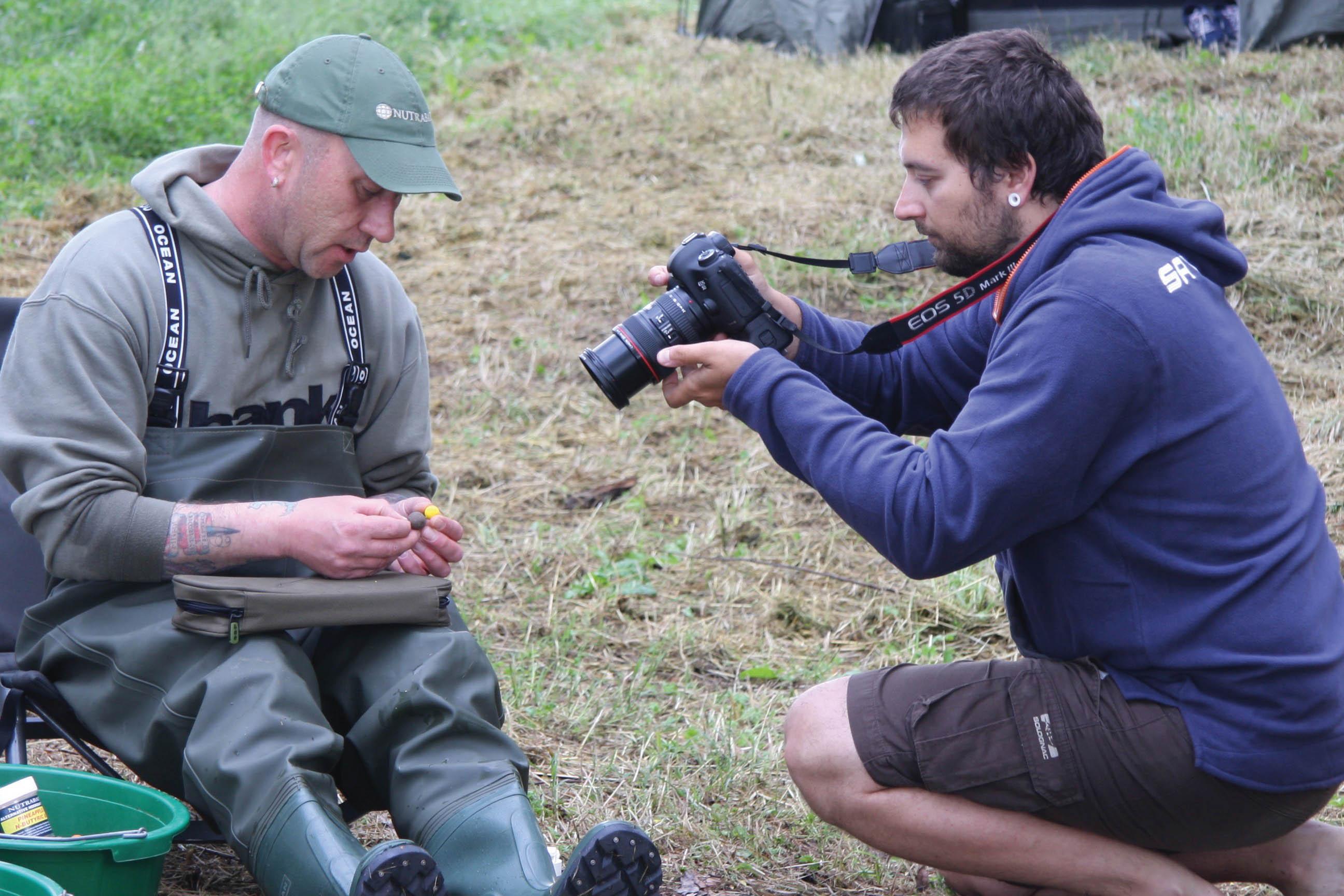
Chuck was off the mark within an hour of Team Outdoor’s arrival, and I have to say the take came as something of a relief to us both. After my hectic opening night, I think we both expected that a few more fish might well be on the cards, but nothing is ever guaranteed. We certainly felt that we needed a couple of nice fish on the bank to allow Salvo to make the type of film he was hoping for.
We had worried unnecessarily, though. Chuck’s opening fish was 39lb-plus, and was followed shortly after by commons of 41lb and 35lb. The same afternoon and evening also produced fish of 41lb, 39lb and 34lb for me, and Salvo, who seemingly appeared from nowhere, bristling with Canon EOSes as soon as our buzzers sounded, absolutely lapped it up!
For someone who is not generally a fan of making DVDs, or of being filmed on the bank, I have to admit that I found the next couple of days a thoroughly enjoyable experience, although in truth, all Chuck and I did was get on with trying to catch a few fish. The Outdoor team were not the slightest bit intrusive, and they looked after us royally, long into the night, providing us with copious amounts of their wonderful food and wine, and proving infectious company. On both the evenings they were with us, we simply sat around in the darkness, chatting about just about everything imaginable and generally putting the world to rights. Our only occasional interruption was a screaming buzzer and an arm-aching battle with another Bolsena common.
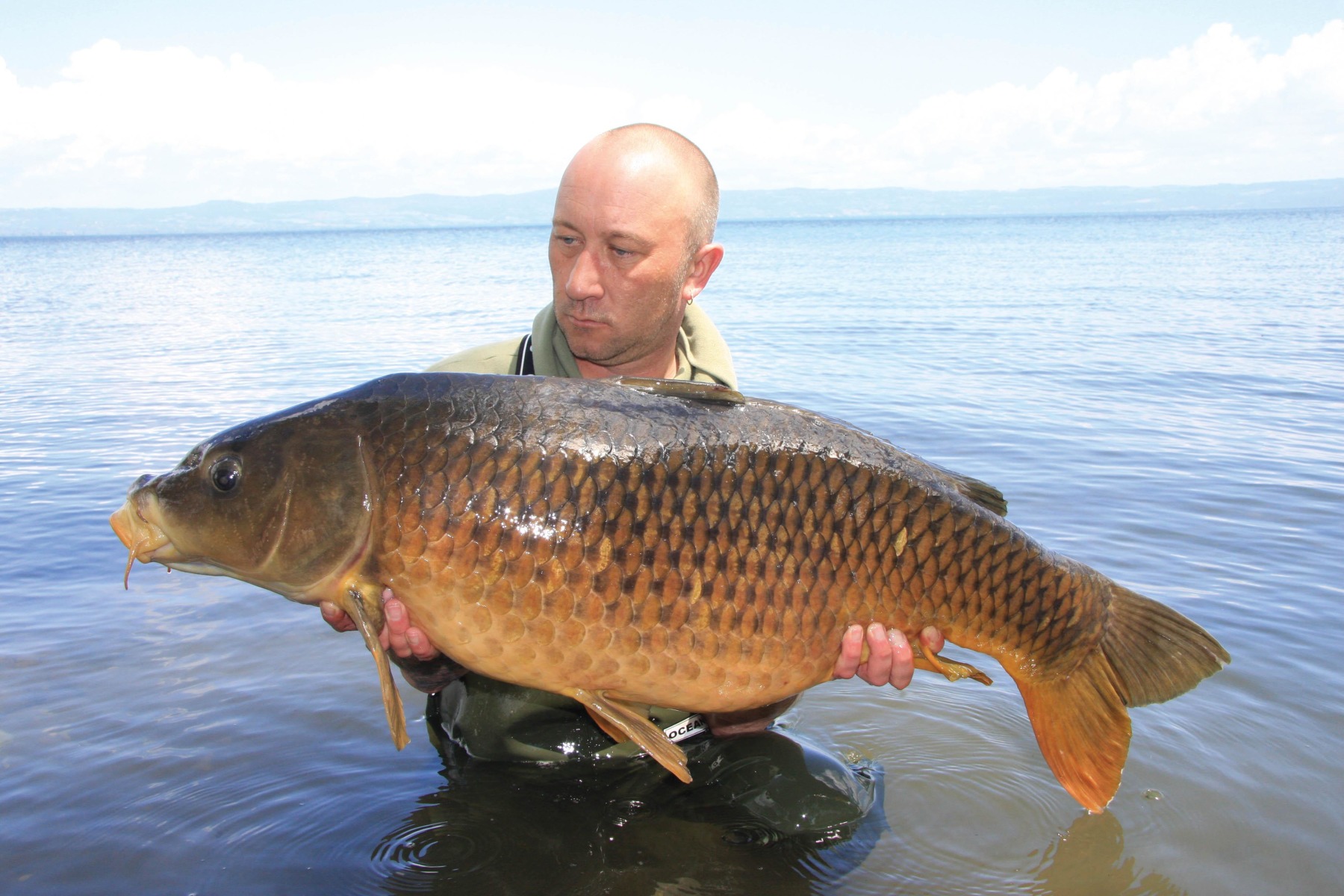
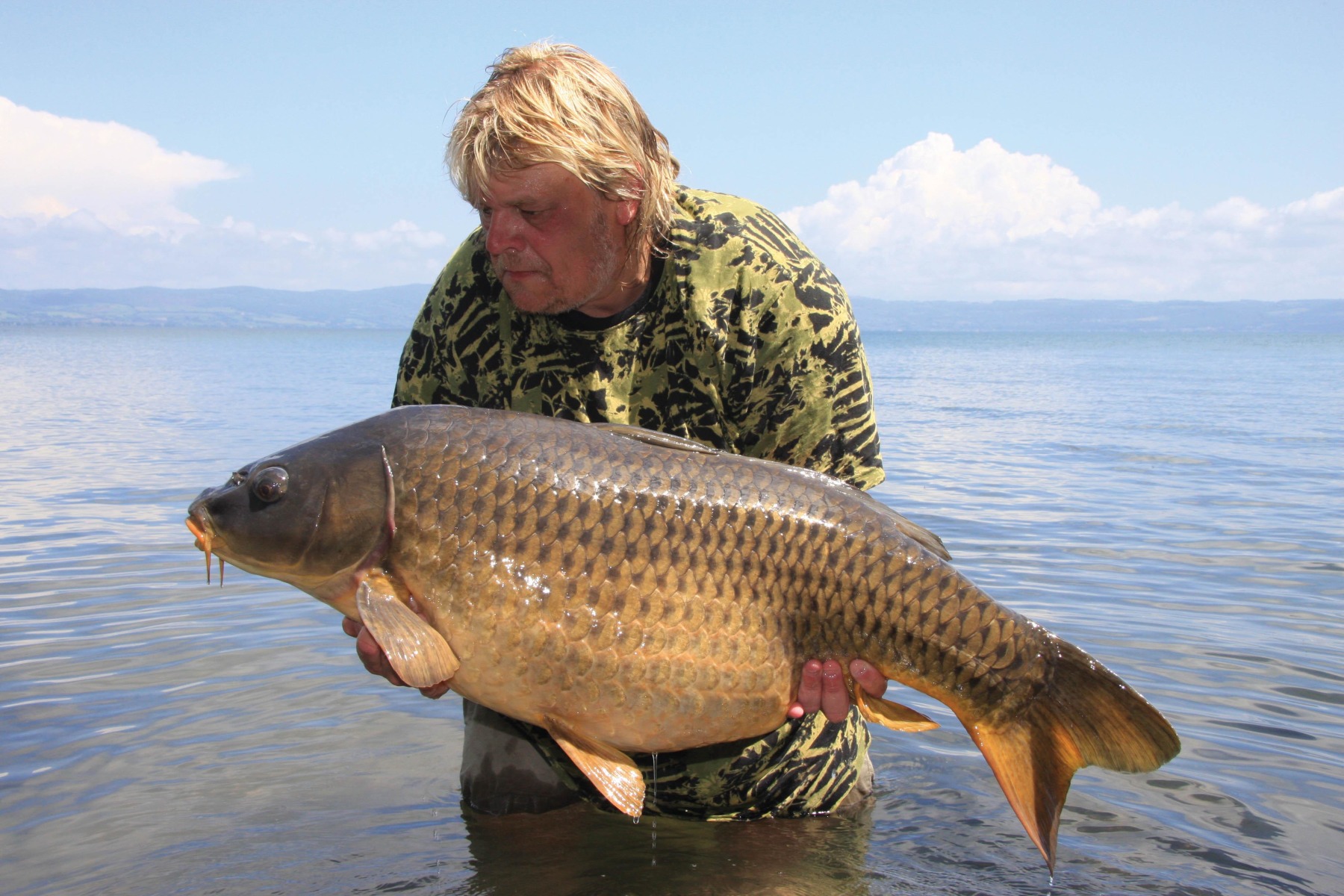
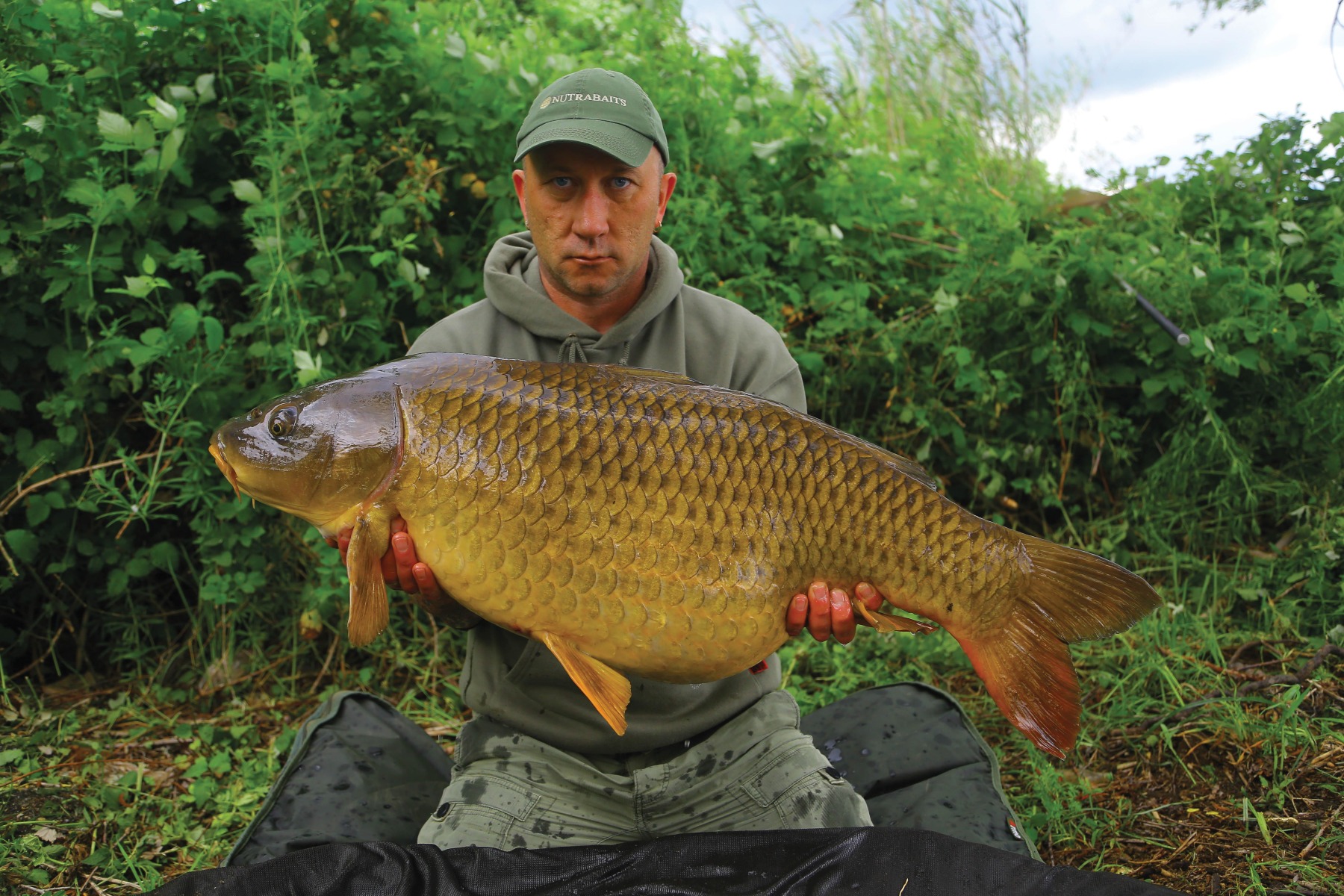
By the time John, Andrea and Salvo eventually left to try to make some sense of Salvo’s footage, our combined tally stood at over twenty fish, several of which had been nicely into the forties, the biggest going just over forty-six pounds—not bad considering that we would have quite happily settled for a fish apiece when we had arrived in Italy a mere three days earlier!
One of the Bolsena regulars, who had mysteriously appeared out of the darkness one evening clutching enough locally produced cold meat and cheese to feed a small army, along with a couple of bottles of remarkably palatable red wine, was adamant that what remained of our trip was very likely to result in a reduction in the number of pick-ups we were getting. On the plus side, though, he was of the strong opinion that an even bigger fish was very much on the cards. He was undoubtedly much more experienced on the water than Chuck and I were, and ever would be, so we turned in that evening—without two directors and a cameraman bivvied up behind us for the first time in two days—severely hoping that there would be at least a little bit of truth in what he had said.
The Wednesday afternoon brought much concern from a few of our newfound Italian friends along the bank, and Chuck and I had spent an hour or so casually discussing the fact that, judging by the very odd patch of black cloud, the weather looked somewhat inclement over the water in the area around Bolsena village. It wasn’t until we got word from down the bank and saw people frantically consulting their iPhones, however, that we realised the severity of what was actually happening on the other side of the lake. Apparently, the remnants of an unseasonal tornado had hit town, and the rain it brought with it was so torrential that rivers of water were literally gushing down the streets. This saw many locals ditch their vehicles and evacuate their homes. I will never quite understand how we managed to make it through without our base camp being washed away, but apart from some rather threatening-looking low cloud and a few minutes of particularly heavy rain, we managed to survive it all more or less unscathed.
Thursday and Friday were noticeably slower in terms of action, although we were both very much of the opinion that the commercial fishermen who had deposited about a quarter of a mile’s worth of baited night-line about fifty yards to the back of our markers certainly hadn’t helped our cause. We continued to see the occasional carp at range, though, and whilst the lion’s share of those that came our way were good thirties, Chuck added another very good fish to the tally with the capture of an absolute stunner of a forty-four-plus, which fought like a tiger and did everything in its power to pull his arm out of its socket!
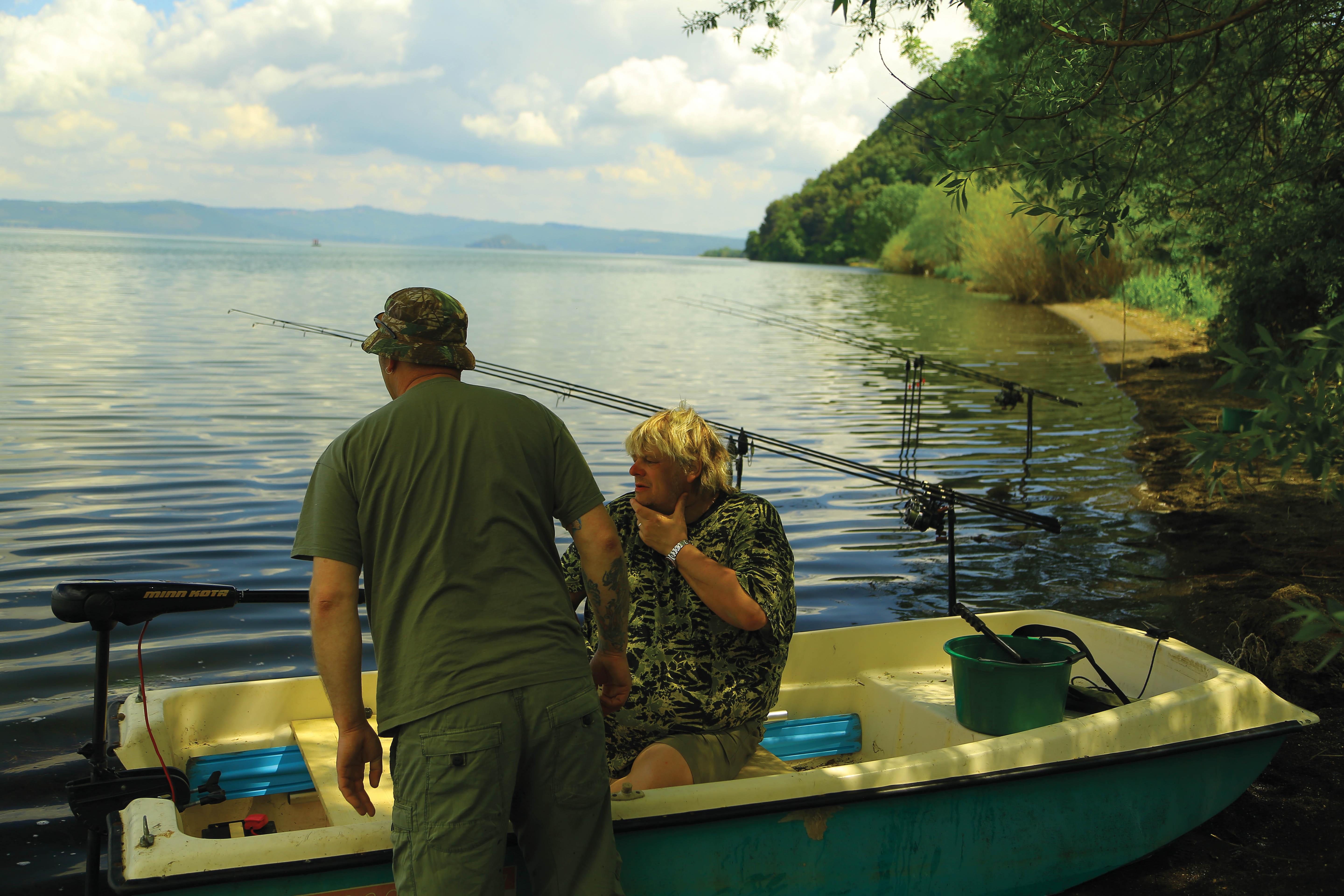
Our plan for the journey home was to make a very early getaway on the Monday morning and get as close to Calais as we possibly could, with a view to overnighting somewhere en route. This would leave us with a drive of around three hours to the Eurotunnel the following morning, followed by the monotony of a three-and-three-quarter-hour slog up through the UK and a provisional arrival time back in Yorkshire of around seven in the evening. As much as we wanted to, deep down we knew that if we were to attempt to fish on the Sunday night, there was no chance of us being able to leave early enough to put our plan into practice.
Reluctantly, we came to the conclusion that the most sensible option was to wrap up on the Sunday and return to the same hotel we had used on the night of our arrival. After a good scrub-up and a bite to eat there, a start time of four in the morning would be much more realistic.
So, as things turned out, the Saturday ended up being our last day behind the rods, and after an uncharacteristically quiet night on the Friday, I awoke early, wondering if they had moved out of the area, or whether our last twenty-four hours might just give us one more good fish before the dreaded pack-down.
The mighty Bolsena certainly didn’t disappoint. Nine more fish came our way, six of which were forties. Consecutive fish of 44lb, 46lb, 46lb, 47lb and 49lb all topped the mainland Europe-accepted big-fish benchmark weight of 20kg! Our biggest fish of the trip—Chuck’s forty-nine-plus—came from a spot slightly closer in, and considerably further right than he had been fishing most of the week. From start to finish, it was a typical Bolsena pick-up, a blistering take preceding an arm-wrenching twenty-minute tussle at range, followed by more of the same in the margins. As she came close and I sunk the net, I was absolutely convinced she would go over fifty pounds—I think we both were—but mysteriously, as we transferred her onto the unhooking mat, we both commented that she didn’t actually feel quite as heavy as she looked. Her incredible length and beauty was, unfortunately, not quite matched by the width across her shoulders.
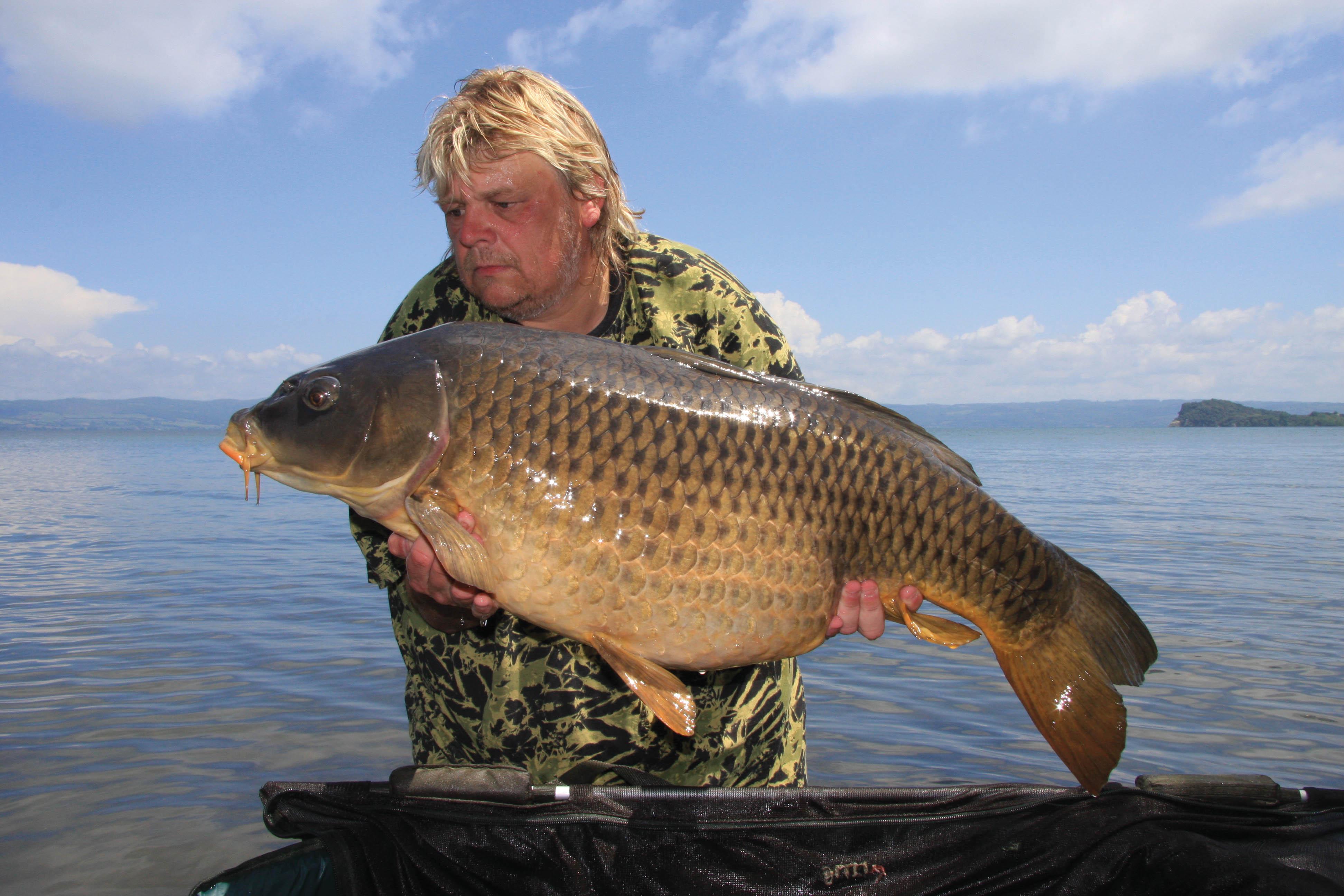
Thirty-three fish and thirteen forty-pluses was beyond our wildest expectations for our first visit to a water of such magnitude, and although the journey home, in common with the trip down to Italy, was seemingly never-ending, the SatNav dying on us somewhere in Switzerland, the miles certainly passed a little quicker, given the fact that we had made so many great memories at such a magnificent place.
It was with some sadness, in fact, that I eventually drove away from Bolsena on the Monday morning. I could quite happily have wasted several months there, watching the world go by, eating the wonderful food and catching the occasional big common. We made many friends during our time on the water, and the hospitality and the welcome we received from the Italians were things I will never forget. Anglers we had never previously met virtually fell over themselves to recharge our boat batteries. They delivered freshly baked croissants, copious amounts of wine, Parma ham and cheese to our swim, and I am rather embarrassed to say that I can’t help but think that things might not be quite like that should two Italian carp anglers ever come over to one of the UK’s better-known venues, stitch up one of the more popular areas for a week and then proceed to catch a few from under the locals’ noses.
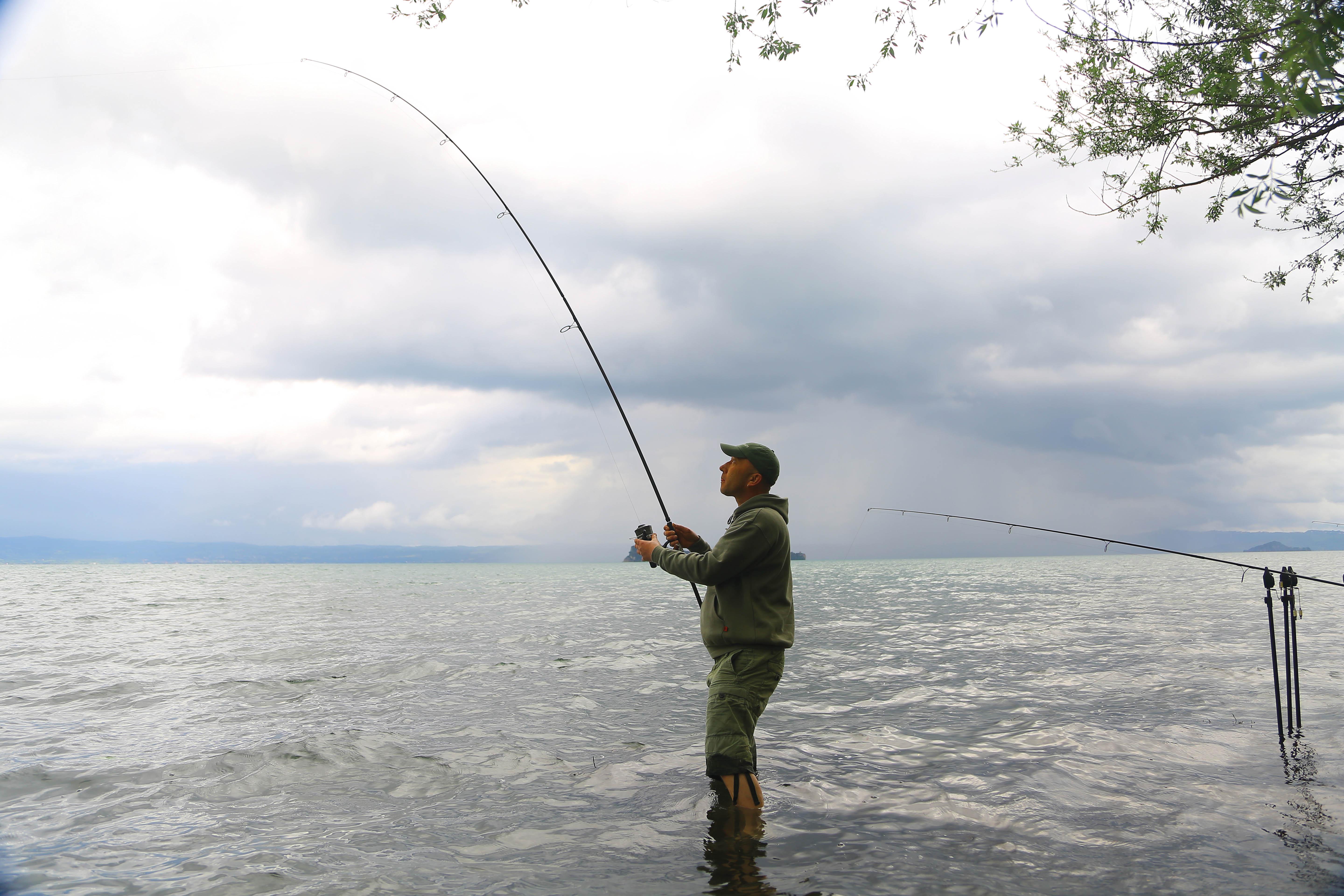
Many of you will no doubt be aware that Lago di Bolsena was the home of the annual World Carp Classic, and within days of Chuck and I arriving back home in Blighty, the inevitable rumour mill had moved into action with a number of people—several of whom really should have known better—jumping to the conclusion that our trip to the venue must surely have been a pre-match warm-up for a tilt at the World Carp crown. Whilst in all honesty, we were both guilty of playing along with it a little for our own amusement, nothing could have been further from the truth. I have nothing whatsoever against competitive carp fishing, of course. Indeed, having spoken at length to several people who absolutely live for such events, I can certainly understand the appeal of them, but they just aren’t for me. I have never entered a carp match in my life, and to be perfectly honest with you, I very much doubt I ever will!



